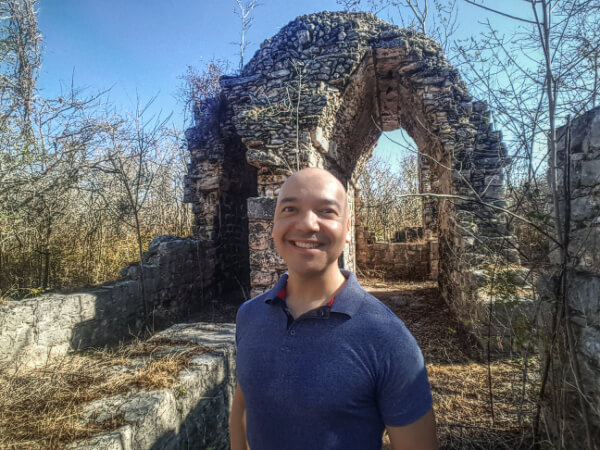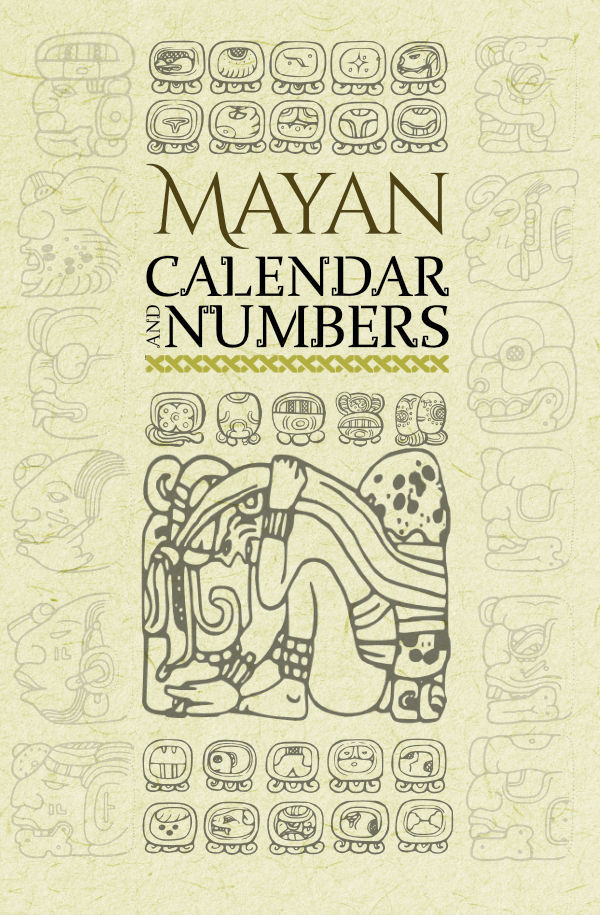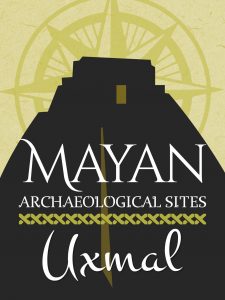Main Mayan Gods
The Mayan gods, like most ancient cultures have been described through religion to explain natural phenomena, the origin of humanity, the structure of the universe itself and everything “inexplicable”; even to protect some sector of their society.
Also, through various discoveries, it can be affirmed that the Mayan religion was used by the rulers as an instrument of control and legitimization of their divine origins before the Mayan people.
The great diversity of Mayan gods
The Mayan gods were part of a complicated and diverse vision on the part of the Mayan people since many of them presented themselves in different forms depending on the place and time they were in. Even their decisions depended on their state of mind, which was directly associated with the number of offerings and sacrifices presented to them by the ancient Mayans.
On different occasions, they came to display multifaceted behavior, had different physical attributes and even came to have different names.
The importance of the Mayan gods comes to vary depending on the time in which the one who worshiped him is, the place and the general circumstances, so it can be difficult to establish which were “the main gods” in the extension of the word.
This is what we must take into account to establish the importance of a Mayan god:
- The separation in time over thousands of years. Just as different deities have been worshiped throughout Western history, the same happened in the Mayan Culture. When civilization began, they needed to pray to a specific god above the others.
Over time, new gods were also created, as in the case of the god Hunab Ku, who is believed to have been created by the Franciscans to evangelize the Mayan people. - Gods associated with multiple elements of nature. There was the god of corn, water, the underworld, and in many cases, one of them represented different aspects of nature.
- The location. The place where the Mayans were living had a direct influence on the importance of their gods since it was more important to worship a god related to rain in dry places, than where it rained abundantly.
Similarly, the corn god was more revered in places where it was harvested than in places where they did not.
The 13 levels of the Mayan sky
The Maya sky
The sky of the ancient Mayan worldview was divided into 13 levels, each of which was governed by an Oxlahuntikú.
The Mayan underworld
The underworld was divided into 9 levels where the Bolontikú or Lords of the Night resided, each living on one level.
The heavenly vault
The Mayan vision of the celestial vault was that it was supported by 4 gods called Bacabés. These 4 gods were related to the four cardinal points were next to them was a Sacred Ceiba, a tree that had given sustenance to the first men.
Dual characteristics of the Mayan gods
Sometimes it can become difficult to identify the Mayan gods, mainly because many of them had dual characteristics such as human-animal, old-young, man-woman.
Popular cases are those of the goddess Ixchel, who can be found as an old woman and in other representations we find her as a young woman.


Mayan gods

Hunab ku
Hunab Ku is considered one of the main gods of the Mayas, who is said to be invisible, incorporeal and omnipresent; he is also said to have been the creator of the cosmos, the earth, and man.
The name given to this god means “a single god”, which is believed to have originated during the early years of the colony, being associated as the father of the creator god of the Mayan indigenous Itzamná.
This is believed mainly because there are no pre-Hispanic records of Hunab Ku, suggesting that the Franciscan missionaries used it to create a transition from a polytheistic belief to a monotheistic one. Even the first document where Hunab Ku is mentioned, is from the 16th century, in Motul’s Dictionary.
It was believed that this god had not only created the cosmos and the world, but also created the human beings from corn and, for all this, he was considered the father of all, both humans and the other Mesoamerican deities.
According to the Maya-Spanish Dictionary (Cordemex 1980 edition), citing Ralph L. Roys and Eric Thompson
… the only living and true god, he was the greatest of the gods of Yucatán, and he had no figure, because he was incorporeal, only god. He is also known by the name of kolop u wich k’in, which suggests a deity of rain, one of the names given to Itzamná, the Mayan god of creation, considered the most important of all.
Maya-Spanish Dictionary (Cordemex 1980 edition), Ralph L. Roys and Eric Thompson
Itzamná or God D

There is some controversy regarding the origin, meaning, and other aspects of this Mayan god, mainly because it’s said that he was a priest who came to Chichén Itzá at its foundation and became a god. At the same time, he considers himself the son of the god Hunab Ku, a god who seems to have been invented by the evangelists shortly after the conquest.
It is also said that he married the goddess Ixchel and they had children, some of whom were creator gods.
Having said this, this is what is said and believed about Itzamná:
The priest Zamná
Zamná, as he was known before becoming a deity, was originally a great Mayan priest who came along with the Chanes de Bacalar (later called itzáes) to found and settle in what is now known as Chichén Itzá around the year 525.
Zamná was considered a wise man who is said to have invented the first characters that served as letters to the natives of the region, he is also considered the main piece in the creation of the Mayan culture of northern Yucatan after his arrival to Chichén Itzá in the time of its foundation.
Later, under the influence of Zamná, other cities such as Ek Balam, Izamal, Motul and T’Hó (the current city of Mérida) were founded.
As time passed and as his fame grew, Zamná was elevated to a deity for everything he contributed to the Mayan culture.
The god Itzamná
Itzamná was considered the Mayan god of the sky, so he was in charge of protecting the sciences, writing, and especially astrology in which the Mayas excelled. He is also known as the god of wisdom, god of the sky, night and day; it’s considered the universal spirit of life that uses chaos for creation.
He was seen as the Mayan deity who symbolized the energy that created water. The Yucatecan Mayans also attributed to him the invention of writing, the calendar, medicine, and agriculture.
Apart from all that’s attributed to Itzamná, he is also frequently related to the god Chaak, mainly because he is also related to water.
Itzamná appears in different codices such as that of Dresden, Madrid, and Paris.
Representation of the Mayan god Itzamná

His most popular appearance is that of a sitting, toothless, and elderly humanoid, with sunken cheekbones, and a large and curved nose.
It was also believed that it could take different forms, being able to become a crocodile, a two-headed winged dragon that from the sky pours water to the earth, but can also be seen in the form of a bird and with snake features.
Ixchel or goddess I

Ixchel is the most important goddess of the Mayan pantheon, and since she was found in different representations with the god Itzamná, they are considered husband and wife.
This goddess was represented with the following aspects and events of the Mayan culture:
- She was associated with lunar cycles and fertility.
- It was believed to represent water in its most destructive form, such as floods and other water-related natural disasters.
- She was the protector of pregnant women, midwives, and healers, as well as other aspects of medicine in general.
- She was related to different artistic expressions such as the creation of textiles, painting, singing, and dancing.
- She was known as the Shining Lady or Lady of the Rainbow.
- On the other hand, her figure is also associated with diseases and the destruction of the world, which is in contrast with her mentioned attributes.
All this made the moon goddess the most relevant female deity among the main gods of the Mayans.
Representation of the Mayan Goddess Ixchel

The Goddess Ixchel is represented in many different ways such as:
- Carrying a snake on her head.
- A skirt with bones in the shape of a cross.
- Holding a rabbit with one hand and a flower in the other.
- She could be represented as a young woman (crescent moon) overflowing with beauty or as an old woman (waning moon) with sagging breasts and stretch marks on her abdomen.
Young Ixchel
In the Classic period (250 – 950) she was represented as a young woman within a moon symbol. In most of the contemporary sculptures, she is represented as a kneeling young woman, in some cases carrying a rabbit, the quintessential symbol of the Moon.
Ixchel as an old woman
In many of her representations, a long-standing woman can be found pouring a container of water or weaving while the sun rises, which is why she is also known as the goddess of the trade.
She has symbols related to death such as a twisted snake on her head, or crossed bones on her skirt. She is also found in the codices as an old woman who empties a pitcher of water on the ground or with a loom tied around her waist.
Present veneration of the goddess Ixchel
Every year, the goddess Ixchel is celebrated in an event where they row in canoes from Xcaret, to one of the most important temples dedicated to this goddess located in Cozumel, just as the pre-Hispanic Mayans did.
It’s worth mentioning that Isla Mujeres was also dedicated to the worship of the goddess Ixchel.















